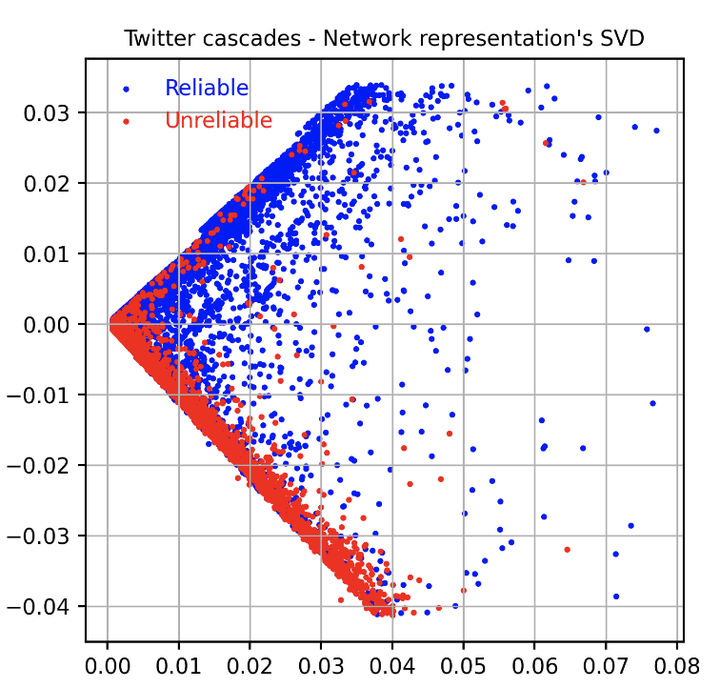Leveraging Social Interactions to Detect Misinformation on Social Media
 Twitter cascades in the test data represented by their users via SVD. Color shows label class
Twitter cascades in the test data represented by their users via SVD. Color shows label class
Abstract
Detecting misinformation threads is crucial to guarantee a healthy environment on social media. We address the problem using the data set created during the COVID-19 pandemic. It contains cascades of tweets discussing information weakly labeled as reliable or unreliable, based on a previous evaluation of the information source. The models identifying unreliable threads usually rely on textual features. But reliability is not just what is said, but by whom and to whom. We additionally leverage on network information. Following the homophily principle, we hypothesize that users who interact are generally interested in similar topics and spreading similar kind of news, which in turn is generally reliable or not. We test several methods to learn representations of the social interactions within the cascades, combining them with deep neural language models in a Multi-Input (MI) framework. Keeping track of thesequence of the interactions during the time, we improve over previous state-of-the-art models.